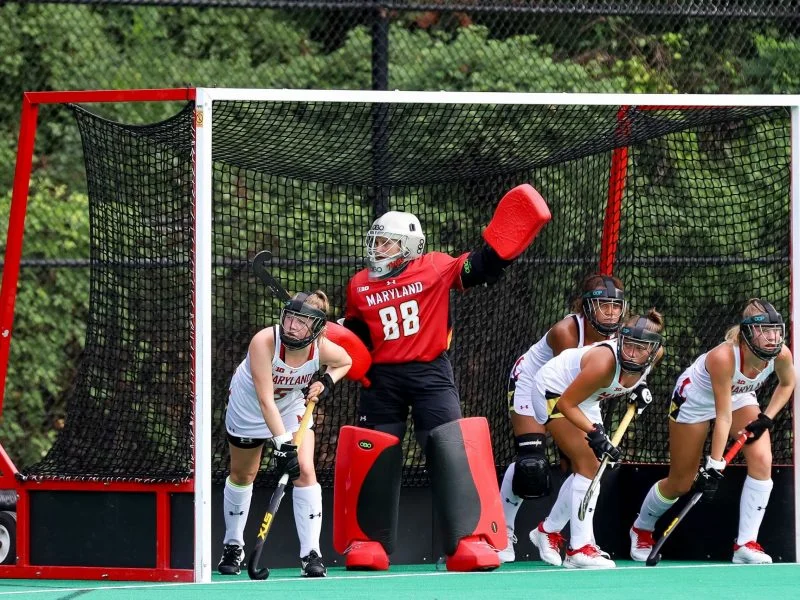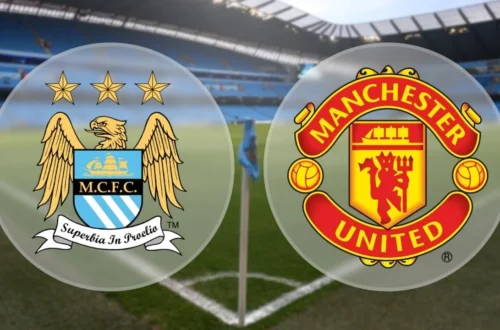Field Hockey Goalie off Season lifting Program: The off-season is your golden opportunity to come back stronger. As a field hockey goalie, your demands are unique — you need explosiveness, lateral quickness, hip mobility, core stability, upper body control, and the ability to recover quickly during long matches or tournament play. A well-structured lifting program during off-season can make all the difference.
Below are six essential phases/topics, each with guidance, exercises, and programming tips, to help you build a goalie-specific lifting plan.
1. Foundational Mobility & Anatomical Adaptation
Before piling on heavy weights, you need to build your body’s ability to move correctly. Without good mobility and anatomical adaptation, you risk overuse injuries or poor movement patterns that will limit performance.
What this phase involves:
-
Hip mobility: Goalies use extreme hip positions (butterfly, wide knees) so internal/external rotation, groin, adductor, and hip flexor flexibility are crucial. Foam rolling these areas helps.
-
Joint stability: Strengthening stabilizer muscles around knees, ankles, hips, and shoulders. Exercises might include glute bridges, single leg balance work, banded internal shoulder rotations, etc.
-
Core activation: Ensuring core is stable through multi-plane movement. This includes anti-rotational work, isometric core drills, low back control.
Typical programming ideas:
-
Duration: ~3-4 weeks
-
Frequency: 3-4 sessions/week
-
Reps/sets: Higher rep ranges (10-15+), lighter loads, lots of bodyweight / band work / mobility drills
-
Sample exercises: 90/90 hip lifts, step ups, half-kneeling hip flexor stretches, glute bridge marches, banded clamshells
This phase builds the “movement quality” that allows later strength/power phases to be effective without injury. Programs like “Goalie Anatomical Adaptation” focus exactly here.
2. Building Functional Strength
Once you have good mobility and your movement patterns are clean, it’s time to develop multi-joint strength that’s specific to the goalie’s demands.
Key areas to target:
-
Lower body strength: Squats, deadlifts, lunges, single-leg variations (single-leg deadlift, Bulgarian split squat) to mimic pushes, kicks, butterfly transitions.
-
Upper body strength: Pull-ups, rows, overhead presses; needed for arm control, stick handling, and pushing off posts.
-
Posterior chain: Hamstrings, glutes, lower back; critical for explosive movements, lateral pushes, and for preventing injuries.
Programming tips:
-
Duration: ~4-6 weeks
-
Frequency: 3 sessions/week or split over upper/lower body
-
Reps: Typically 4-8 reps for strength (medium to heavy load); stabilization work (8-12 reps or isometric holds) alongside
-
Include unilateral work (single-leg / single-arm) to fix asymmetries
Example exercises:
| Exercise | Why It Helps for Goalies |
|---|---|
| Back squat / Front squat | Builds general leg strength, hip extension for pushes/slides |
| Single-leg deadlift | Balance, hamstring/glute strength, stability when one leg is loaded |
| Bulgarian split squat | Unilateral strength, hip/knee alignment |
| Pull-ups / Chin-ups | Upper back, control when reaching or diving |
| Overhead press / Dumbbell press | Shoulder stability and strength for stick and pad work |
3. Power & Explosive Training
You can be strong, but if you can’t move quickly or explosively, you lose precious fractions of seconds — whether reacting to a shot, covering a breakaway, or just pushing across the crease.
Explosive power work includes:
-
Plyometrics: Box jumps, hurdle jumps, lateral jumps, depth jumps. Start with more stable landings then progress to more reactive, dynamic jumps.
-
Olympic or power lift variants: Power cleans, hang cleans, trap-bar jumps; these train triple-extension (hips, knees, ankles) which is important for jump / explosion.
-
Resisted sprints / sleds: If possible, adding resistance to sprinting or doing short bursts with load helps translate strength into speed.
Programming tips:
-
Duration: Interspersed throughout the season, but major focus in mid-late off-season (~weeks 6-12)
-
Frequency: 1-2 power / plyo focused sessions per week
-
Reps: Lower rep range (2-6), high intensity, full rest between sets to ensure maximum output
Progression example:
-
Start with box jumps (bilateral) → then single-leg box jumps → lateral/or angled jumps → reactive jumps (e.g., bounding over obstacles) → plyometric contrast sets (heavy cluster + explosive movement)
4. Conditioning, Speed & Recovery
Strength and power won’t take you far if you can’t maintain output late in games, or recover during tournaments where multiple matches happen in a short span.
Components to include:
-
Aerobic base: Steady state cardio (bike, jog, rowing) to build capacity. Helps with recovery, maintaining posture, controlling breathing under fatigue.
-
Anaerobic / High-Intensity Interval Training (HIIT): Short bursts, sprint intervals, shuttle runs, lateral movement drills. These mimic game demands.
-
Speed & agility: Ladder drills, cone drills, reactive footwork, lateral shuffles, T-drill, etc. Focused footwork and reaction is key.
-
Recovery: Foam rolling, dynamic stretching, rest days, mobility sessions, flexibility work especially in hips, adductions, groins.
Programming smartly:
-
Early off-season emphasize aerobic work (low intensity, longer duration)
-
As off-season progresses, shift toward more game-specific speed, power, reactive work
-
Always include recovery days or lighter sessions to avoid overtraining
5. Sample Phases & Weekly Layout
To make everything tangible, here’s a sample framework broken into phases and a weekly layout. You can adjust based on your age, training experience, and available equipment.
| Phase | Duration | Focus | Weekly Layout (4-5 sessions) |
|---|---|---|---|
| Phase 1: Anatomical Adaptation / Mobility | 3-4 weeks | Movement quality, joint prep, light loads | Session A: Mobility + Core + Light Strength Session B: Mobility + Unilateral Strength Session C: Light Power & Plyometrics + Agility |
| Phase 2: Strength Build | 4-6 weeks | Heavy strength, unilateral control | Session A: Lower Body Heavy (Squats, Deadlifts) Session B: Upper Body Strength Session C: Full Body Strength with Stability Work Session D: Light Power + Speed Work |
| Phase 3: Power & Explosive Emphasis | 4-5 weeks | Plyometrics, reactive strength, speed work | Session A: Plyos + Core Session B: Explosive Lower Body + Speed Session C: Strength Maintenance + Upper Body Session D: Agility / Reaction + Conditioning |
| Phase 4: Pre-season / Peaking | 2-3 weeks | Sharpen, reduce volume, maintain power & speed | Sessions similar but lighter load, more explosive & reactive; active recovery; simulate game-like efforts |
Sample Weekly Layout (Phase 2 / Strength Build):
-
Monday: Lower Body Heavy – Back Squat, Single-Leg Deadlift, Glute Bridges, Core work
-
Wednesday: Upper Body Strength – Pull-ups, Overhead Press, Rows, Push Press, Shoulder Stability
-
Thursday: Power / Explosive – Box jumps, Plyo lunges, Sled sprints, Agility drills
-
Saturday: Full Body + Speed & Conditioning – Circuit of strength + HIIT intervals + mobility
Adjust rest days so you have at least 1 full rest day / recovery day each week.
6. Injury Prevention & Common Mistakes
Even with the best program, mistakes or oversight can derail progress, or worse, lead to injury. Here are high-impact tips to stay safe and maximize gains.
Common risks for goalies:
-
Groin/adductor strains: because of wide leg movements and butterfly saves.
-
Knee injuries: from repeated drops, side pushes, deep flexion under loading.
-
Lower back strain: when core or posterior chain is weak and mobility is poor.
How to prevent:
-
Prioritize hip/groin mobility and eccentric control in adductors and hamstrings.
-
Include single-leg work to balance left/right asymmetries.
-
Warm up properly before heavy lifting or explosive sessions.
-
Use correct technique; don’t sacrifice form for load.
-
Schedule recovery: rest days, foam rolling, stretching, sleep.
Avoid these mistakes:
-
Going heavy too soon without laying the movement and mobility foundation.
-
Neglecting unilateral movements — symmetric strength is rarely enough.
-
Overdoing plyometrics or high impact when fatigued — increases injury risk.
-
Ignoring upper body & core — strong arms, shoulders, core help in saves, control, balance.
-
Failing to periodize — if you try to do everything at once at max intensity, burnout or injury is likely.
Conclusion
An effective off-season lifting program for field hockey goalies must balance mobility, foundational strength, explosive power, conditioning, and injury prevention. By structuring your training in phases — starting with movement & adaptation, then building strength, then adding power & speed — you’ll enter the next season better prepared, less likely to get hurt, and ready to perform.




